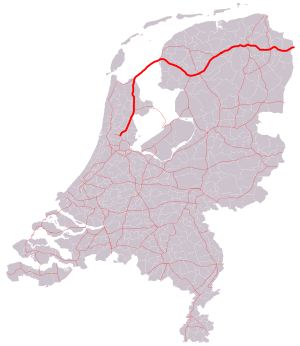A7_motorway_(Netherlands)
A7 motorway (Netherlands)
Motorway in the Netherlands
The A7 motorway is a motorway in the Netherlands connecting Zaandam, via the Afsluitdijk, Sneek and Groningen to the German border near Bad Nieuweschans. The entire road is part of the European route E22, with exception of the first kilometer, between the terminus in Zaandam and the interchange Zaandam. The total length is 236 km.
This article needs additional citations for verification. (November 2016) |
You can help expand this article with text translated from the corresponding article in Dutch. Click [show] for important translation instructions.
|

